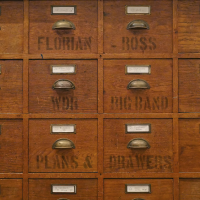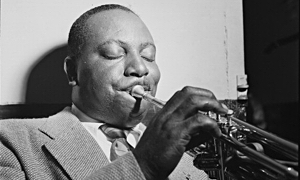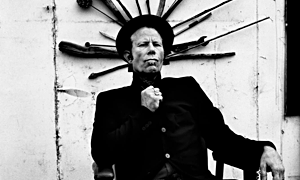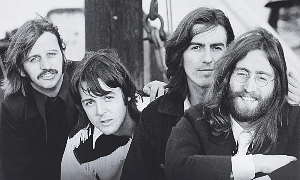Home » Jazz Articles » Book Review » U2: Until the End of the World
U2: Until the End of the World
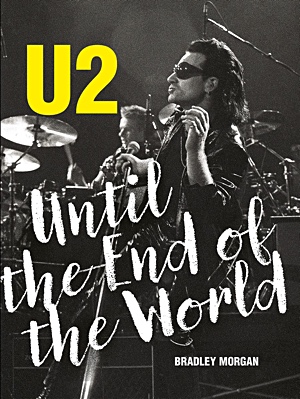 U2: Until the End of the World
U2: Until the End of the World Bradley Morgan
240 Pages
ISBN: 1786751658
Gemini Adult Books Limited
2025
There are bands we live with for so long that they become part of our personal geography. For Bradley Morgan, author of this new book on U2, it's clearly the case. This is his second exploration of their world—the first focused specifically on The Joshua Tree era (U2's The Joshua Tree: Planting Roots in Mythic America)—but rather than simply extending that earlier map, he redraws it entirely, sharpening some contours and softening others. Writing about U2 is a little like photographing them: the challenge lies not in finding material, but in framing it freshly. With U2: Until the End of the World, Morgan manages to do just that, pairing careful narrative with a striking visual record that traces the band's journey from Dublin clubs in 1976 to the world's grandest stages. The result is a book that feels both familiar and freshly revealing—alive, layered, and uncommonly inviting.
One of the book's most immediate strengths is how the writing and photography work in tandem. With over 150 images spanning nearly five decades, the visual narrative carries as much weight as the text. A shot of the young Dublin quartet in worn leather jackets speaks as eloquently of post-punk urgency as any passage about Boy (Island Records, 1980) or October (Island Records, 1981). Later, tour images from the Zoo TV years—drenched in irony and neon—echo Morgan's analysis of U2's flirtation with media saturation. The visuals never feel ornamental; they anchor the text, giving it weight and immediacy.
The photographs themselves deserve particular attention. They're not just promotional gloss or well-trodden press shots. Many capture fleeting, less-seen sides of the band: Adam Clayton caught in concentration, Larry Mullen Jr. mid-beat, The Edge glancing offstage, Bono unguarded rather than posturing. These images bring texture, reminding us that U2's longevity isn't only about reinvention at the macro level but about the persistence of these four individuals, aging and adapting together.
As for the writing, it strikes a balance between the personal and the critical. Morgan is clearly invested—this is his second book on the band, after all—but there's no blind fandom here. He acknowledges the missteps alongside the triumphs. Pop (Universal Music Group, 1997), often dismissed as the band's muddled experiment, is treated with nuance, shown as both overreaching and, in places, prescient. Likewise, No Line on the Horizon (Universal Music Group, 2009) is revisited not as a failure, but as a work that struggles earnestly with relevance. This even-handedness lends the book journalistic clarity: it's less about persuasion than about allowing readers to see the arc in full.
What sets this volume apart is its willingness to pause over moments others might skip. A B-side, a half-forgotten stage improvisation, even an offhand comment in an old interview—these are handled with the same care as the stadium-defining anthems. Morgan draws on interviews and behind-the-scenes anecdotes to place U2 firmly in their cultural and political contexts, from Live Aid to their work with Amnesty International. He notes how the band's music absorbed—and sometimes tried to respond to—the turbulence of the 1980s, the ambiguity of the 1990s, the shifting uncertainties of the new millennium.
The design reinforces this approach beautifully. The photographs are reproduced with care, large enough to command attention, sequenced so they complement the narrative rather than distract from it. Flipping through, there's movement from grainy black-and-white club shots to vivid panoramas of stadium tours, and then to more recent, reflective portraits. The effect is cumulative: the passage of time becomes palpable, the weight of decades compressed into a single visual journey. The prose itself has an ease to it, alternating between reflective passages and sharper analysis. At one moment, readers are guided through the layered production of The Unforgettable Fire (Island Records, 1984); the next, they're reminded of the raw adrenaline of War (Island Records, 1982). That tonal variety keeps the reading experience engaging, avoiding the flatness that often plagues rock biographies.
What emerges is not a tidy history but a portrait of a group grappling with scale: how to be both a band and an institution, how to make music that speaks to intimacy while playing to the back rows of a stadium. Morgan doesn't pretend to stand entirely outside the story. He admits to the way certain songs or albums intersected with his own life, how perceptions shifted over time. This is where the book gains its warmth—it is personal without being precious.
By the time the later chapters arrive, it becomes clear what sets this book apart. It doesn't strain to be definitive. Instead, it acknowledges U2's story as ongoing, sometimes contradictory, occasionally frustrating, but always worth returning to. That honesty feels refreshing. In an age where legacy acts are often embalmed in myth, this book allows for something looser and truer. Closing the book, the writing and images work together to rekindle the urge to listen—to the hits, yes, but also to the hidden tracks, the near-forgotten experiments, the songs that sound different now than they did when first heard. U2: Until the End of the World achieves something deceptively simple: it makes a familiar story feel worth revisiting.
Tags
PREVIOUS / NEXT
Support All About Jazz
 All About Jazz has been a pillar of jazz since 1995, championing it as an art form and, more importantly, supporting the musicians who make it. Our enduring commitment has made "AAJ" one of the most culturally important websites of its kind, read by hundreds of thousands of fans, musicians and industry figures every month.
All About Jazz has been a pillar of jazz since 1995, championing it as an art form and, more importantly, supporting the musicians who make it. Our enduring commitment has made "AAJ" one of the most culturally important websites of its kind, read by hundreds of thousands of fans, musicians and industry figures every month.









